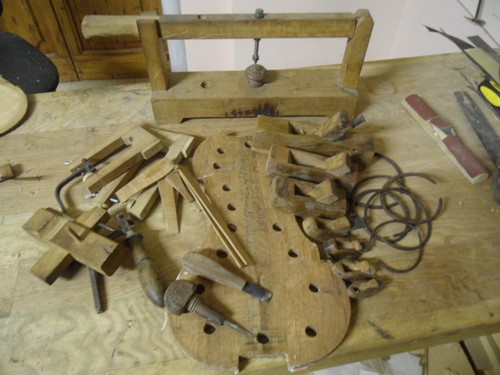Once the turning was one, I began shaping the blocks with a file and a card scraper. I varnished the piece using black lacquer (for the finishing) and an oil-resin varnish that I then buffed.
Once the turning was one, I began shaping the blocks with a file and a card scraper. I varnished the piece using black lacquer (for the finishing) and an oil-resin varnish that I then buffed.
To craft the tuning pegs, several types of wood can be used: ebony, rosewood, boxwood, pear wood and jujube wood. I used wild pear wood, since it is harder than the common variety of pear tree. I then used a manual lathe and different gouges to shape the pieces.
The Cremonese 1715 was crafted by Antonio Stradivari during his most flourishing working period, when he was about 60 years old. Its proportions and rounding are said to be of great inspiration for the new generations of luthiers. This instrument was played by many famous musicians, such as Darius Gras, Jules Garcin, David Laurie, Joseph Joachim and it is now property of the provincial tourism board of Cremona.
Today we have many high-precision instruments that speed up the various stages of work, but the old luthiers of the past, like the most famous Amati, Guarneri, Stradivari, managed anyway to create the splendid instruments that we still admire today. Fascinated by their history, after various researches I managed to build various tools that I use for the construction of my instruments: chisels, planers, compasses, clamps and a thickness measurement tool ( of which I am very proud: that tool allows with extreme simplicity to work in a neater way). I like to call myself a luthier of the past but I want to also be attentive to the needs of today’s musicians.

Thanks to Mr. Gennai’s invitation, I had the pleasure to be a guest at Geo&Geo’s studios. I tried my best during my time and through my words to convey the beauty of this ancient craft that has become my work.